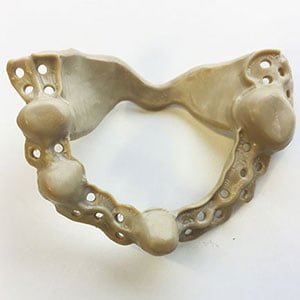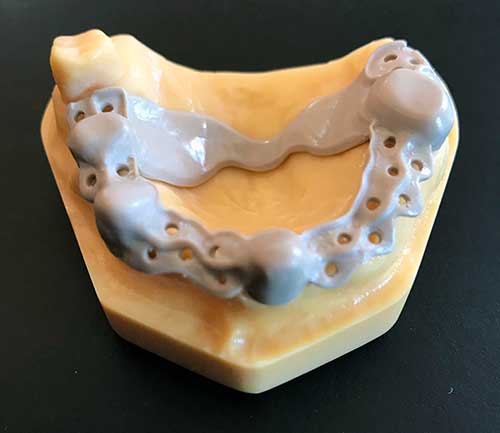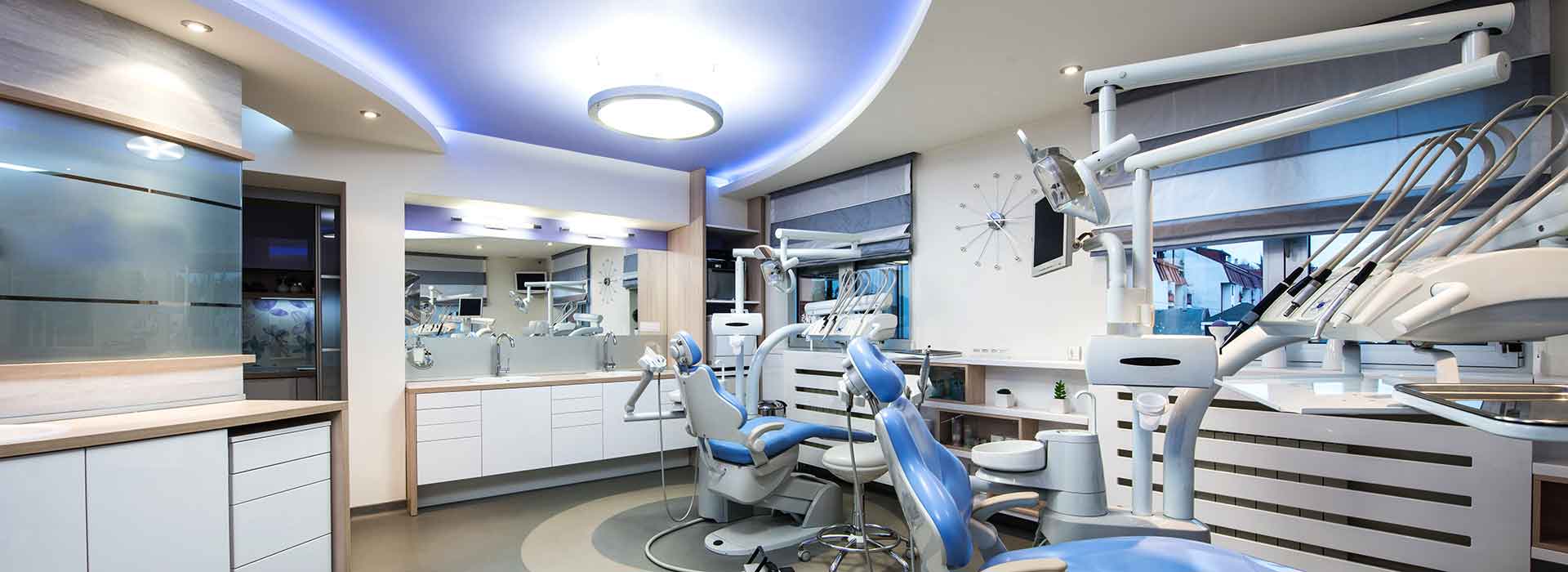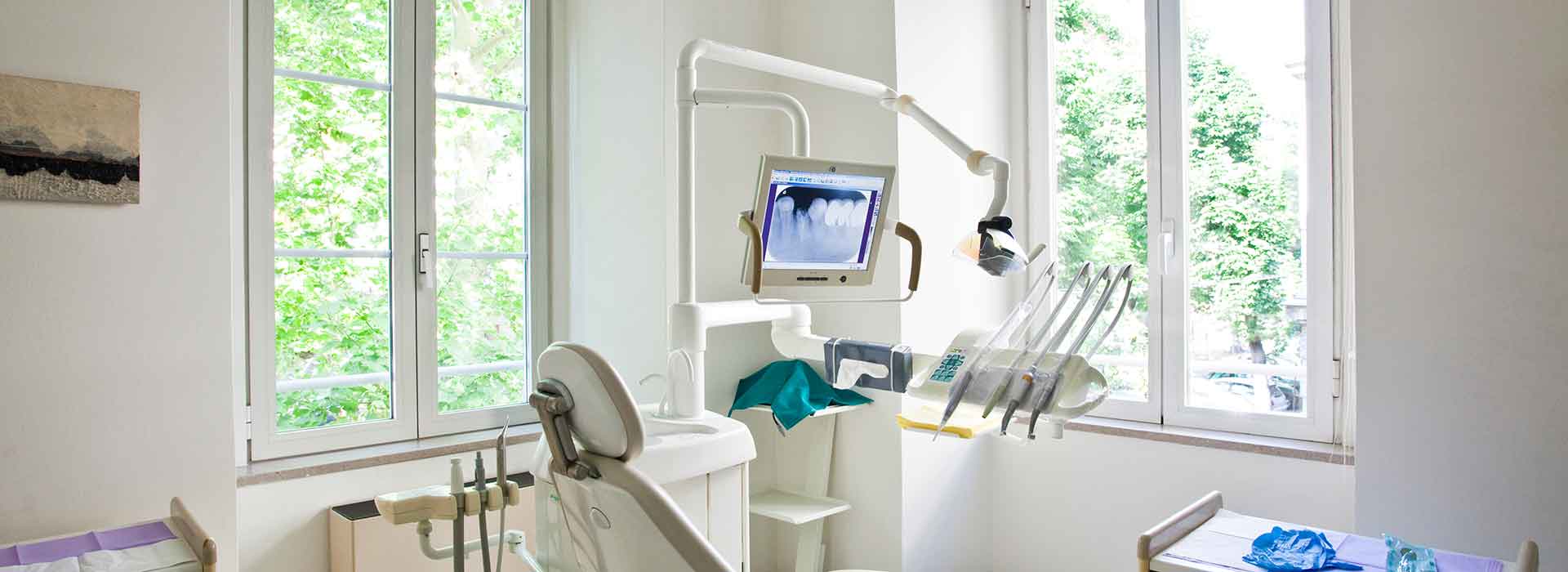High-performance polymers like PEEK have demonstrated impressive potential in medicine, including use in dental applications. Both polymers are effective when used for dental devices, which include removable partial dentures, full dentures and overdentures. They are also found in implant telescopic bars and in suprastructures that are mounted with screws.
The versatility of PEEK is a compelling point in the polymers’ favor, but it’s far from the only one. PEEK dental devices are prized for their aesthetics, comfort, precise fit, superior mechanical properties and radiolucency. Put it all together, and it’s clear that high-performance polymers are a perfect fit in dentistry.
The Advantages of a PEEK Dental Implant
PEEK is relied on in some of the most demanding applications imaginable, including applications in aerospace, oil & gas and the automotive industries. While dentistry doesn’t place the same kind of demands as a rocket engine would, medical-grade polymers must check a lot of boxes to function properly in the oral cavity. PEEK are up to the task, and offer the following to patients:
1. A favorable flexural modulus – Dental implants are installed in the jawbone and are designed to integrate with native bone to provide a secure fit. Proper osseointegration is essential to the implant procedure, and when an implant fails, it’s usually because it didn’t fully integrate with the patient’s jawbone.
Only a few biomaterials will reliably integrate with native bone. Among them, PEEK’s flexural modulus and weight-bearing capabilities are the most similar to the body’s own cortical bone. This means PEEK implants can easily stand in for bone, while ensuring it doesn’t affect how neighboring bone bears weight. That’s an important consideration because the jawbone must be stimulated with biting and chewing forces to remain healthy. If the implant absorbs these forces to an excessive degree, the body will respond by reducing mineral density in nearby bone. This can increase the chances of fracture, bone loss or other complications, and these complications are particularly concerning in dental implants, as it may lead to implant failure.
 2. Comfort – Comfort is extremely important for dental implants, as they are are permanently implanted in the patient jaw and could affect eating, talking or anything with their mouth. A poorly fitted implant that conducts heat and alters taste is one that will be a constant burden for the patient. Those are concerns with metal implants, but PEEK implants do not suffer from the same issues.
2. Comfort – Comfort is extremely important for dental implants, as they are are permanently implanted in the patient jaw and could affect eating, talking or anything with their mouth. A poorly fitted implant that conducts heat and alters taste is one that will be a constant burden for the patient. Those are concerns with metal implants, but PEEK implants do not suffer from the same issues.
High-performance polymers are lightweight and can be fabricated to the patient’s unique oral cavity structure. This ensures the implant does not shift when it is utilized, which prevents discomfort. The rise of CAD and CAM technology in dentistry has made it possible to fabricate implants from 3D imaging of the patient’s oral cavity.
Further, PEEK implants do not trap heat like other materials, preventing annoying sensations in the mouth that may distract and frustrate the patient.
Finally, PEEK implants have minimal impact on taste and smell, which is not the case with metal implants. Metal implants can leave a metallic taste in the mouth, and this can be distressing to some patients.
3. Extensive biocompatibility – PEEK has undergone decades of testing, research and application, and it has demonstrated complete biocompatibility in many parts of the human body. To be considered biocompatible, a medical material cannot be cytotoxic, genotoxic or immunogenic, and PEEK is none of the three. It can be safely implanted in the mouth without fear of generating a negative response, which is not always true with metal implants.
Although titanium is also considered biocompatible for dental applications, a study published in Neuro Endocrinology Letters raised some doubts. Specifically, the study examined 56 people who received a titanium dental implant and then developed chronic health issues. The implant was removed from the patients and their response recorded. The researchers found that titanium hypersensitivity was a primary contributing factor for the health issues in more than half of the patients.
4. Radiolucency – Although PEEK’s imaging advantages aren’t quite as critical in dentistry, they are still worth comparing to metal implants. Part of PEEK’s success in medicine can be attributed to its radiolucency, as it is compatible with every form of medical imaging. If left unmodified, PEEK produces no imaging artifacts and is ideal for MRI and CT scans. If augmented with barium sulfate, it can generate additional opacity and show up on X-rays. PEEK’s versatility in this regard means it won’t get in the way should the dentist need to image the patient’s mouth and check their progress.
PEEK is resilient, durable, resistant to hydrolysis and chemical attack, easy to customize for patients, comfortable, aesthetically neutral, and most importantly, safe.



